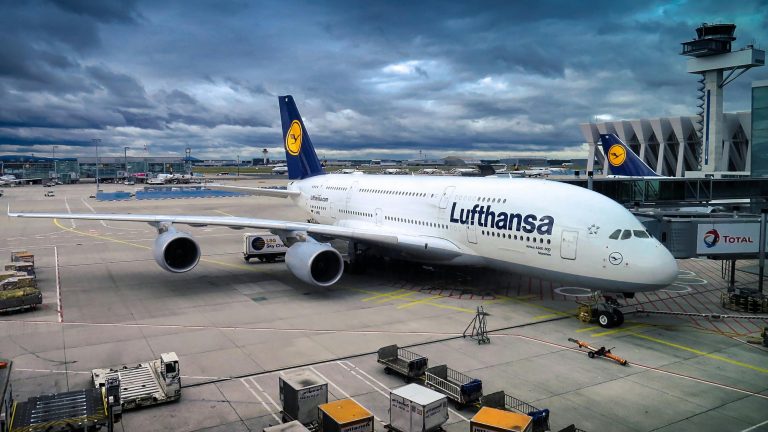Most commercial renovations aim to impress—fresh interiors, better layouts, and upgraded spaces that reflect growth and progress. However, HVAC systems often get overlooked or rushed through behind those new walls and ceilings. This small mistake can lead to problems like uneven temperatures, rising energy bills, or noisy vents that disturb daily work. Imagine spending all that time and money on a renovation, only to have staff complain about being too hot or cold.
It’s frustrating, and worse, it’s avoidable. Many business owners don’t realize how early planning and the proper support can make HVAC work smoothly and silently in the background. Whether managing a small office update or a full-scale commercial overhaul, avoiding HVAC design mistakes can help you get the results you’re paying for. By partnering with the HVAC Services Vancouver team, you can gain access to expert guidance for your HVAC needs, ensuring a seamless, efficient, and comfortable system post-renovation.
In this blog, we will explore the top HVAC design mistakes made during commercial renovations and how to avoid them to create a space that feels as good as it looks.
Importance of Proper HVAC Design in Commercial Renovations
When renovating a commercial space, the HVAC system is as vital as the aesthetic updates. A well-designed HVAC system ensures comfort, energy efficiency, and proper airflow, all contributing to a positive work environment. Here’s why adequate HVAC design matters:
- Comfort: Good HVAC systems keep the temperature steady and let fresh air in, making the space pleasant for employees and clients.
- Energy Efficiency: Properly designed systems reduce wasted energy, lowering utility bills and reducing carbon footprint.
- Indoor Air Quality (IAQ): Ensuring proper ventilation helps remove pollutants, dust, and odors, leading to healthier air and fewer health complaints.
- Cost Savings: Investing in efficient HVAC design can prevent expensive repairs and replacements in the future.
- Compliance: Many local codes require specific HVAC standards, especially regarding ventilation and air quality.
Without the right HVAC system, your renovation could lead to uncomfortable spaces, high energy costs, and ongoing maintenance issues. By prioritizing HVAC from the start, you can avoid these problems and create a functional, cost-effective environment.
8 Common HVAC Design Mistakes and How to Avoid Them
When planning a commercial renovation, HVAC design mistakes can lead to long-term issues like poor comfort, high energy bills, and expensive repairs. Many businesses unknowingly repeat the same errors, which could be avoided with proper planning. Below are the most common HVAC design mistakes and how to prevent them.
- Poor Ductwork Design
Poorly designed ductwork is a common issue in commercial renovations and often leads to weak airflow, inconsistent room temperatures, and wasted energy. This happens when ducts are too small, too long, or have too many unnecessary bends. As a result, even the best HVAC system can’t perform properly, leading to discomfort and higher utility costs.
To avoid this, ductwork should be carefully planned to match the new space layout. It’s essential to ensure that ducts are the right size, well-sealed, and properly routed to allow smooth airflow throughout the building. A well-thought-out duct system supports even air distribution, better system efficiency, and improved indoor comfort.
- Neglecting Ventilation Requirements
Ventilation is often overlooked but plays a massive role in maintaining air quality. Poor ventilation can make the air feel stale and may lead to health complaints from employees due to dust, allergens, or lack of fresh air.
Ensure your HVAC system includes adequate fresh air intake and proper exhaust systems. Local building codes often require specific ventilation standards, especially for enclosed workspaces. Include these needs in the initial HVAC design so you’re not forced to redo things later or fail inspections.
- Failing to Zone Properly
Every area in a commercial building may not need the same temperature. Treating the entire space as one zone can lead to discomfort and wasted energy. Some rooms might be too hot, while others stay too cold.
To avoid this, design your HVAC system with zoning in mind. This allows different areas to be controlled separately based on their use. For example, conference rooms, server rooms, and open office spaces should have separate controls. This not only improves comfort but also helps reduce energy consumption.
- Reusing Outdated HVAC Equipment
Trying to save money by reusing old HVAC units might seem wise, but it often leads to higher long-term costs. Older equipment may not be compatible with your renovated layout, and it’s likely to be less efficient and more prone to breakdowns.
Instead, assess the condition of all existing equipment during the planning phase. If a system is over 10–15 years old, consider replacing it with modern, energy-efficient models. This ensures your HVAC system runs smoothly and supports the new space correctly.
- Ignoring Energy-Saving Opportunities
Sometimes, energy-saving options are overlooked to cut costs upfront, but this can lead to expensive utility bills later. Many businesses miss out on long-term savings by not exploring energy-efficient HVAC designs and systems.
To prevent this, consider including programmable thermostats, energy recovery ventilators (ERVs), and high-efficiency units. You can also use natural ventilation, daylighting, and proper insulation. These options may slightly increase initial costs but lead to significant savings and better system performance.
- Overlooking Control System Integration
Modern HVAC systems work best when integrated with building control systems. If you ignore this during the design stage, you may struggle to manage heating and cooling efficiently. Manual controls or disconnected systems are harder to operate and waste energy.
Avoid this by planning smart controls and automation into your HVAC design. Integration with your building management system (BMS) allows you to monitor temperatures, schedule system use, and get alerts when maintenance is needed. This leads to easier management and better comfort throughout the building.
- Improper Placement of Thermostats
Thermostats placed in direct sunlight, near windows, or heat-producing equipment can give incorrect readings. This causes the HVAC system to run unnecessarily or shut off too early, leading to discomfort and wasted energy.
To avoid this, install thermostats in areas that best reflect the average temperature of the zone. They should be away from vents, doors, and windows and mounted at the correct height on interior walls. Careful placement ensures the system responds accurately to real temperature conditions.
- Not Accounting for Future Expansion
Many renovations focus only on present needs, ignoring future business growth. If your HVAC system is not designed with expansion in mind, you might need costly upgrades or replacements sooner than expected.
Discuss your future goals with the HVAC designer. Whether you’re adding new workspaces, equipment, or employees, your system should be able to handle additional loads or be easily upgraded. This forward-thinking approach saves time, money, and hassle down the road.
Proper HVAC planning during renovations is essential for long-term comfort, efficiency, and cost savings. By avoiding these common mistakes and working with experienced professionals, your commercial space can be more comfortable and energy-friendly from day one.
Final Thoughts
Avoiding HVAC design mistakes during commercial renovations can save you from future headaches, extra costs, and uncomfortable working conditions. By planning ahead, choosing the right equipment, and working with experienced professionals, you can create a system that runs smoothly, uses less energy, and keeps everyone comfortable. Paying attention to details like proper zoning, ventilation, and duct design makes a big difference in long-term performance. Taking the appropriate steps now means fewer problems later and a more efficient, reliable HVAC setup for your business. For more expert advice and support, contact Vancouver Heating Services experts now!
Keep an eye for more latest news & updates on Get Pro Magazine!








